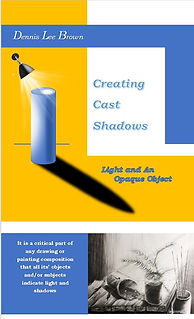top of page
by
Dennis Lee Brown
Vivid & Diversified Contemporary Artist
Heading 5
Fine art drawing and painting is a timeless skill that captures the essence of visual storytelling and learning from an expert can significantly enhance one's artistic journey. Dennis Lee Brown, a seasoned artist, and educator, offers a unique perspective on the art of drawing, and painting. His approach combines the precision of applied science with the fluidity of fine art, making his ...
Drawing & Painting Tutoring
Designed to take your art far beyond the next level
bottom of page










![Everywhere we look, we observe objects containing various degrees of light and dark.
This lightness and/or darkness, to individuals in the art world, consider it as tonal
value. Between the continuum of light and dark lies, a world of gray tones, and these
tones are measured in terms of steps in a graduate scale. As the tones progress in
value towards white or black there is a vast verity of shade values considered as
graduate tones. These graduate tones gradually increase as they creep towards white
[light] and decrease in value as they descend towards black [dark].](https://static.wixstatic.com/media/94d5cf_e7db3653ab2043a68627e88037431edb~mv2.jpg/v1/fill/w_229,h_299,al_c,q_80,usm_0.66_1.00_0.01,enc_avif,quality_auto/Image-empty-state.jpg)

